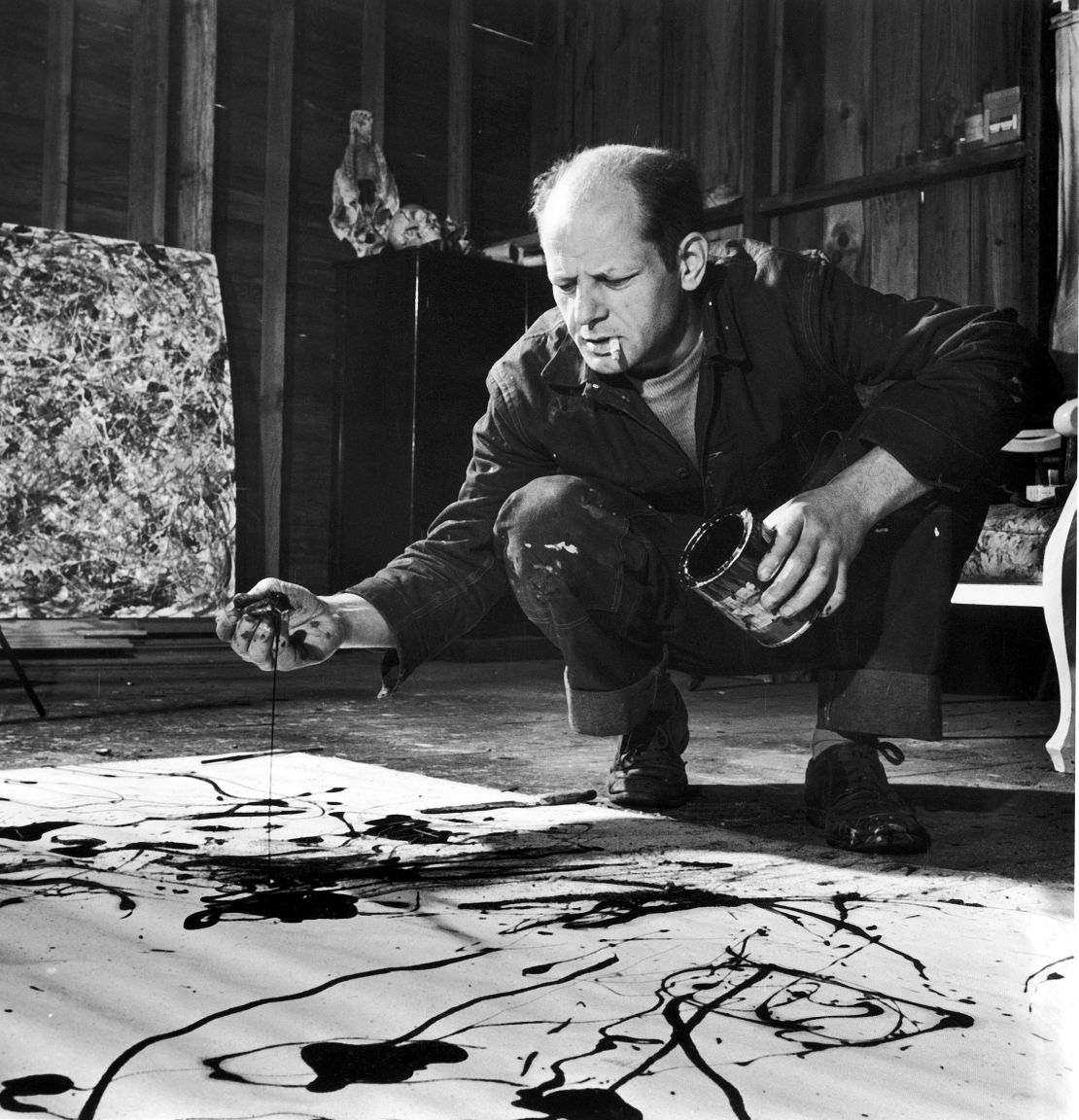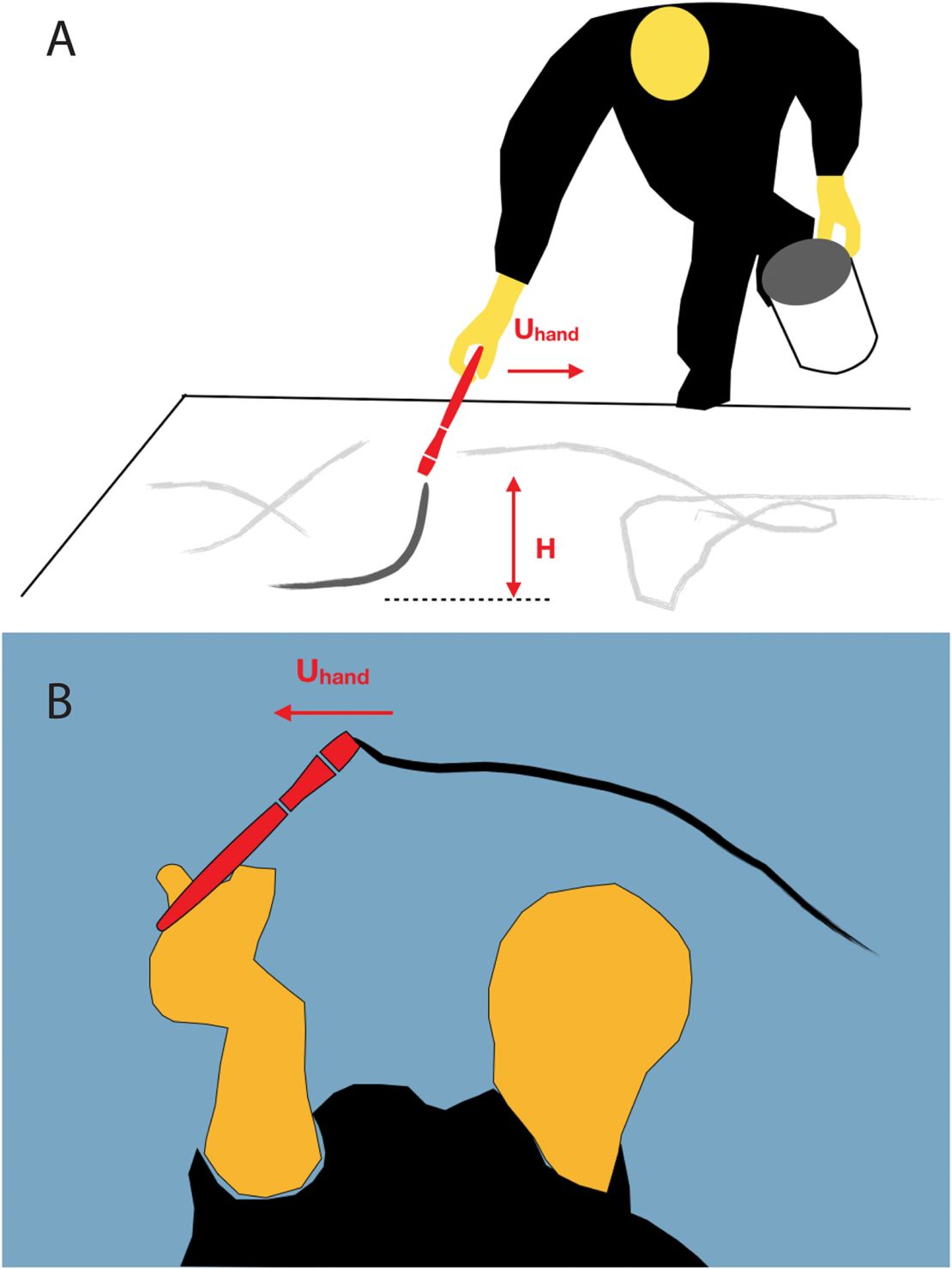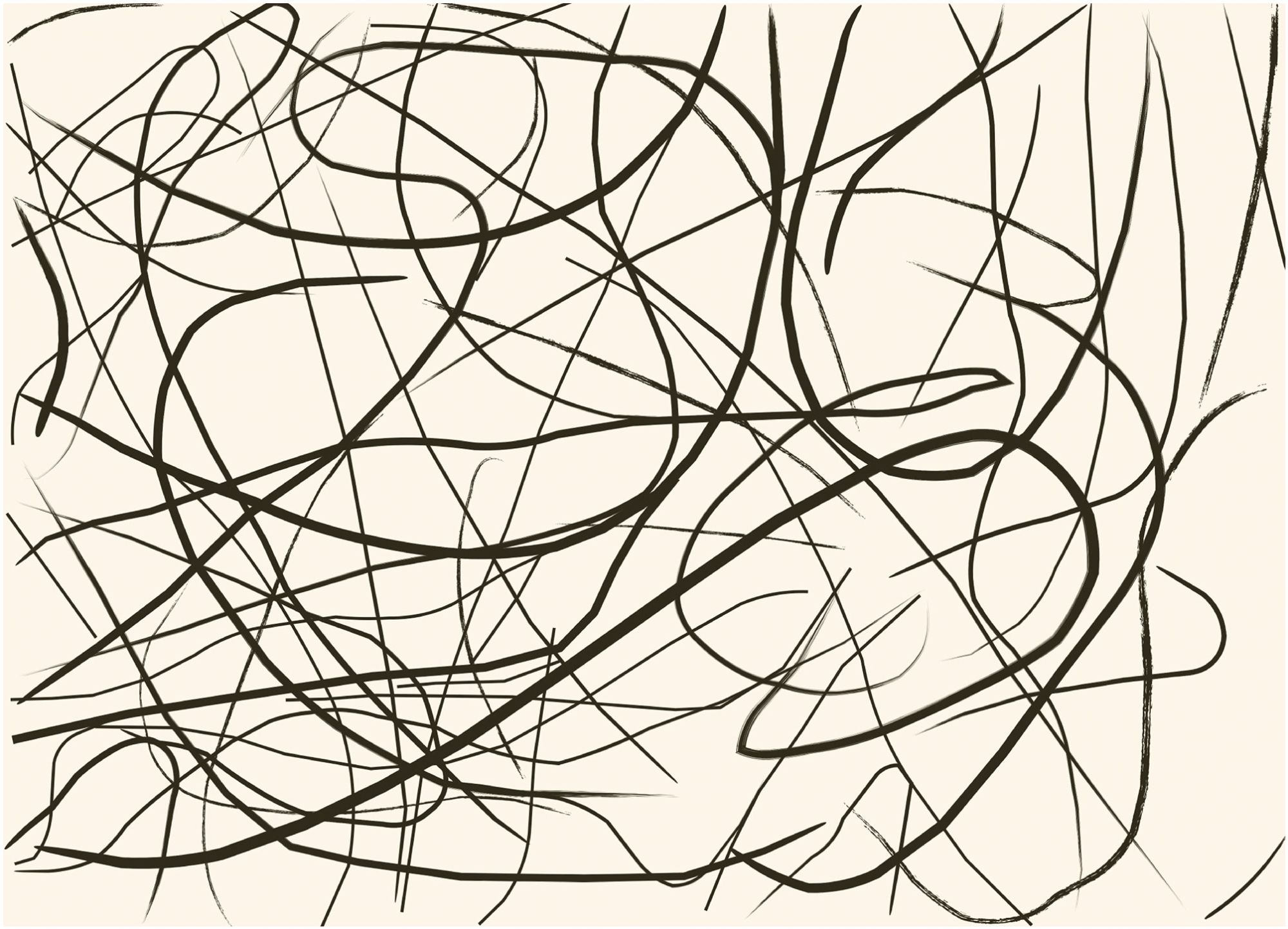American painter Jackson Pollock is remembered for his abstract-expressionist art and “drip technique.” But researchers who studied his work wanted to take a deeper look at the science behind his art.
What they discovered is that Pollock manipulated fluid dynamics to create his work, whether it was a conscious decision or not, according to a new study. The study published Wednesday in the journal PLOS ONE.
Some of the iconic pieces Pollock created were not created with a brush, but by pouring paint with the aid of a stick to create overlapping strands and filaments of color. And those pieces are lacking coiling instability – the noticeable curls and coils created by a fluid when it’s poured.

Pollock would pour the paint on a canvas he positioned across the floor. It’s been referred to as the “drip technique,” but the researchers also said that’s not really an accurate description of what Pollock achieved.
Dripping would have created droplets across his painting, whereas Pollock preferred continuous streams of paint across the canvas.
“Like most painters, Jackson Pollock went through a long process of experimentation in order to perfect his technique,” said Roberto Zenit, senior study author and a professor in Brown’s School of Engineering. “What we were trying to do with this research is figure out what conclusions Pollock reached in order to execute his paintings the way he wanted. Our main finding in this paper was that Pollock’s movements and the properties of his paints were such he avoided this coiling instability.”
The researchers analyzed videos taken of Pollock when he was creating his art, noting the speed of his movements and his distance from the canvas while pouring paint. They recreated his technique , using a syringe to distribute the paint from varying heights above the canvas and changing up the speed.

“We can vary one thing at a time so we can decipher the key elements of the technique,” Zenit said. “For example, we could vary the height from which the paint is poured and keep the speed constant to see how that changes things.”
Pollock was able to avoid coiling instability based on the speed of his hand, a maintained distance from the canvas and the thickness of the paint that was used.
The researchers compared it to other thick liquids, like honey, which tends to curl upward in a stack before spreading.
“What we found is that he moved his hand at a sufficiently high speed and a sufficiently short height such that this coiling would not occur,” Zenit said.
The researchers said this lack of tight curls in Pollock’s work could be used to help identify and authenticate his works.
“I consider myself to be a fluid mechanics messenger,” Zenit said. “This is my excuse to talk science. It’s fascinating to see that painters are really fluid mechanicians, even though they may not know it.”

